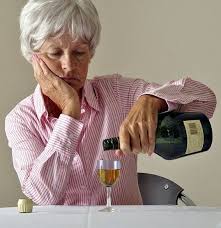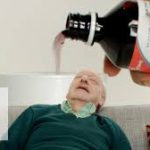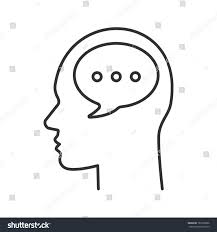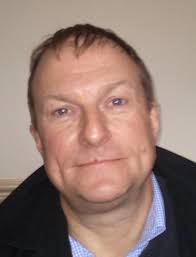I want to thank people for their very encouraging comments and suggestions following my last post. They have really inspired me. So…I’m going to keep the blog going for a while, and I’m going to enjoy it.
Now here’s that guest post I promised you–
…by Michael A…
After going through 28 rehabs within 3 years, I now carry 3½ years of sobriety. During my recovery attempts, I fell into an unforeseeable yet common addiction. I became addicted to rehab itself, sometimes called the “Treatment Shuffle.”
My addiction started as many commonly do – partying at a young age and going too far until I needed drugs every day to feel ok with all my insecurities. By the age of 21, I was crying for help, addicted to cocaine and opioids. Thanks to my mother and her insurance, we were confident we could find affordable treatment. Researching treatment revealed an overwhelming number of drug rehab centers, most of which looked like 5-star resorts. This appeared like a nice way to step away from my broken lifestyle. Neither I nor my mom knew how to appropriately vet treatment, and I chose the one that appealed to me aesthetically. My mom was just happy I was going somewhere safe, away from drugs.
 I was astonished by the luxury when I arrived, but still nervous about this life change. I was approached by a client who befriended me, giving me an education on the “how to screw the system” plan that most of the clients followed. I learned about abusing detox meds, how to act like the perfect client, and who to get real (illegal) drugs from, all within the first week.
I was astonished by the luxury when I arrived, but still nervous about this life change. I was approached by a client who befriended me, giving me an education on the “how to screw the system” plan that most of the clients followed. I learned about abusing detox meds, how to act like the perfect client, and who to get real (illegal) drugs from, all within the first week.
After the detox and stabilization phase, I was sent to a less structured environment to transition back to normal life. This concept should work. However, this center,  like many others, placed me in a low-income area surrounded by drug activity. Imagine 50 people from all over the country who just want to get high in a house where drugs are right over the fence. Most clients hopped the fence every day, got high, and hooked up with girls (it was a coed rehab). It was chaos. Being insecure, I fell right in. We’d get caught, sent back to detox, loaded up on suboxone and benzos (detox meds we’d get high on) and start treatment all over. The insurance billing cycle restarts and we would too. These types of centers benefit if you relapse because they can bill your insurance at a higher level of care.
like many others, placed me in a low-income area surrounded by drug activity. Imagine 50 people from all over the country who just want to get high in a house where drugs are right over the fence. Most clients hopped the fence every day, got high, and hooked up with girls (it was a coed rehab). It was chaos. Being insecure, I fell right in. We’d get caught, sent back to detox, loaded up on suboxone and benzos (detox meds we’d get high on) and start treatment all over. The insurance billing cycle restarts and we would too. These types of centers benefit if you relapse because they can bill your insurance at a higher level of care.
I didn’t learn much at this 30-day treatment center. No healing took place, and all I wanted was to keep numbing my emotions with drugs. When I finished, I went to a  sober living house, attempted AA, but continued to relapse. I still needed some real therapy. As time continued, I met more experienced users, got into new drugs, and learned more about how to use rehabs and detoxes to support my addiction.
sober living house, attempted AA, but continued to relapse. I still needed some real therapy. As time continued, I met more experienced users, got into new drugs, and learned more about how to use rehabs and detoxes to support my addiction.
I played out the same pattern for about 3 years. I’d get high until I ran out of money, then go to detox for a free (insurance  covered) high on opioid-benzo detox cocktails. When I really needed a reset, I would check into luxury treatment centers to get food, sleep and “work the system.” My insurance was great, and I found sober living homes that welcomed me to live there for free and get high, as long as I attended their outpatient rehab program. Treatment centers got paid for every relapse, and my addiction got worse. I knew I needed something more. I had to get away from this lifestyle of rehab hopping. There had to be something different.
covered) high on opioid-benzo detox cocktails. When I really needed a reset, I would check into luxury treatment centers to get food, sleep and “work the system.” My insurance was great, and I found sober living homes that welcomed me to live there for free and get high, as long as I attended their outpatient rehab program. Treatment centers got paid for every relapse, and my addiction got worse. I knew I needed something more. I had to get away from this lifestyle of rehab hopping. There had to be something different.
By talking to people who had sustained sobriety and success in life, I heard about different approaches to recovery: Centers that were long term (3-5 months), challenging physically and mentally, and forced you to confront your traumas and  negative thinking patterns. Places that used alternative approaches to therapy, such as SMART recovery, Rational Emotive Behavior Therapy, fitness therapy, and other critical thinking techniques to heal an addicted brain. For an analytical, physically broken person like me, this sounded like what I needed. I was guided to a place called Tree House Recovery in California, which offered this alternative approach.
negative thinking patterns. Places that used alternative approaches to therapy, such as SMART recovery, Rational Emotive Behavior Therapy, fitness therapy, and other critical thinking techniques to heal an addicted brain. For an analytical, physically broken person like me, this sounded like what I needed. I was guided to a place called Tree House Recovery in California, which offered this alternative approach.
When I got to Tree House, I began a routine of daily fitness therapy, team based training in the ocean that forced the pre-frontal cortex (logic & connection) to be engaged, intense motivational interviewing and therapy, and an addiction education that was more in depth than any other center had offered. It was impossible for me not to heal here. My brain got rewired, I felt empowered, and  began to love life sober. I would highly recommend exploring Tree House Recovery to get an idea of evidence-based treatment that works. This was the one that worked best for me, but I would suggest doing the appropriate research for each individual circumstance.
began to love life sober. I would highly recommend exploring Tree House Recovery to get an idea of evidence-based treatment that works. This was the one that worked best for me, but I would suggest doing the appropriate research for each individual circumstance.
If you know someone struggling with addiction, whether it’s their first time looking for treatment or the 28th time, look through the options. DO NOT let someone pick the easiest route. Do not rush into the first one that will take someone. Spend the time necessary time to make this the only/last treatment needed. Ask the centers you’re looking at for their success rates, and ask how they define success. Is it graduation rates, or graduates that have remained sober for at least a year after treatment? Ask how they obtain this data and how often. Ask what methods are used for treating the biological, psychological, and societal aspects of addiction: how often and why? Most importantly, read a lot of testimonials from graduates and parents.
Rehabs do work if you go to the right one and follow a successful routine to maintain a healthy lifestyle. I got sober to succeed in life. I learned how to use my drive (once used on drug seeking) to find happiness, to achieve excellence and follow my passions. Having an addictive disposition can be seen as an advantage in life when that “go go go” mentality is used for good. I love life today, and am fortunate I survived the “Treatment Shuffle.” 6 ½ years later, I can say success is possible.


 for Isabel (my wife) and one extra trip for the kids and me. It wasn’t all bleak. We spent two weeks in the south of France, and there aren’t many places more beautiful than that. But it was surely disorienting.
for Isabel (my wife) and one extra trip for the kids and me. It wasn’t all bleak. We spent two weeks in the south of France, and there aren’t many places more beautiful than that. But it was surely disorienting. for them. Frantic search for a new school — which now seems to have panned out well. Discovered a great ping-pong spot. Life goes on.
for them. Frantic search for a new school — which now seems to have panned out well. Discovered a great ping-pong spot. Life goes on. and breaking the law almost daily? Of course not. I sometimes still feel incomplete and empty in ways I’ve felt since age 18. I still attach a particular meaning to substances, though my substances these days are pretty benign — and occasional. But I don’t talk about myself much, and maybe I should. You guys share a lot. Maybe I should share more.
and breaking the law almost daily? Of course not. I sometimes still feel incomplete and empty in ways I’ve felt since age 18. I still attach a particular meaning to substances, though my substances these days are pretty benign — and occasional. But I don’t talk about myself much, and maybe I should. You guys share a lot. Maybe I should share more.
 While grief or money woes can cause depression at any stage of life, there are specific factors that make older people who experience depression more vulnerable to addiction, which in turn may be harder to treat.
While grief or money woes can cause depression at any stage of life, there are specific factors that make older people who experience depression more vulnerable to addiction, which in turn may be harder to treat. Doctors are often willing to prescribe these potentially addictive drugs for sleep problems or for vague aches and pains. They also may not spot a developing addiction because it’s too easy to misdiagnose declining mental ability or a dishevelled appearance as being due to depression or dementia rather than substance use.
Doctors are often willing to prescribe these potentially addictive drugs for sleep problems or for vague aches and pains. They also may not spot a developing addiction because it’s too easy to misdiagnose declining mental ability or a dishevelled appearance as being due to depression or dementia rather than substance use. Drug addiction is especially dangerous because our metabolism slows as we age. Substances take longer to filter through the liver and may build up in the body. This puts older adults at greater risk of dangerous side effects or accidental overdoses.
Drug addiction is especially dangerous because our metabolism slows as we age. Substances take longer to filter through the liver and may build up in the body. This puts older adults at greater risk of dangerous side effects or accidental overdoses. Yet older adults deserve the option to seek treatment if they want help with a substance use disorder. Just like younger people, they can and do overcome addictions with proper counselling and support.
Yet older adults deserve the option to seek treatment if they want help with a substance use disorder. Just like younger people, they can and do overcome addictions with proper counselling and support.
 In modern times, the idea of an internal critic goes back to Freud, who envisioned a superego that oversees one’s thoughts and feelings, judges them, and dishes out guilt when it finds that they centre on wishes for sex and murder. Fast-forward to the middle of the century and you’ve got object relations theory, where the superego is just as harsh but a lot more observant. It’s not only sex and aggression that you’re guilty of; it’s also greed and envy. A couple of decades later came “transactional analysis,” a lay-person’s guide to an internal parent in ongoing dialogue with a child-self, with an adult self hopefully emerging in between. Since then? There’ve been all sorts of offshoots, but mainly a more optimistic approach, including the current emphasis on self-compassion, in
In modern times, the idea of an internal critic goes back to Freud, who envisioned a superego that oversees one’s thoughts and feelings, judges them, and dishes out guilt when it finds that they centre on wishes for sex and murder. Fast-forward to the middle of the century and you’ve got object relations theory, where the superego is just as harsh but a lot more observant. It’s not only sex and aggression that you’re guilty of; it’s also greed and envy. A couple of decades later came “transactional analysis,” a lay-person’s guide to an internal parent in ongoing dialogue with a child-self, with an adult self hopefully emerging in between. Since then? There’ve been all sorts of offshoots, but mainly a more optimistic approach, including the current emphasis on self-compassion, in  Addicts don’t need a history lesson when it comes to the internal critic. Just being an addict is enough to earn you a degree in self-judgment, self-contempt, self-hatred, and all their variants. Self-criticism is often (and rightfully) felt to be highly destructive. It arises from the addictive pursuit of drugs,
Addicts don’t need a history lesson when it comes to the internal critic. Just being an addict is enough to earn you a degree in self-judgment, self-contempt, self-hatred, and all their variants. Self-criticism is often (and rightfully) felt to be highly destructive. It arises from the addictive pursuit of drugs,  drink, sex, or food (and all the nasty things we do in preparation or in the aftermath) and it feeds back to our addiction. Because feelings of shame and guilt, which are the key weapons of the internal critic, are so painful that they magnify the need for pain relief. And we know how to get that.
drink, sex, or food (and all the nasty things we do in preparation or in the aftermath) and it feeds back to our addiction. Because feelings of shame and guilt, which are the key weapons of the internal critic, are so painful that they magnify the need for pain relief. And we know how to get that. toilet!) onward. Or maybe because addiction seems inordinately selfish. Maybe because gorging on drugs or booze strikes us as the epitome of greed, and greed is another sin we are scolded for as children. Or maybe because we fail ourselves, we fail others, we lie to ourselves and others, we hurt ourselves and others, we use up the last shreds of self-respect or “authenticity” by indulging yet again when we have promised ourselves to resist temptation.
toilet!) onward. Or maybe because addiction seems inordinately selfish. Maybe because gorging on drugs or booze strikes us as the epitome of greed, and greed is another sin we are scolded for as children. Or maybe because we fail ourselves, we fail others, we lie to ourselves and others, we hurt ourselves and others, we use up the last shreds of self-respect or “authenticity” by indulging yet again when we have promised ourselves to resist temptation. this may be just as familiar — we want to punish ourselves for being bad. We know that more drugging or drinking will bring more suffering, so we can combine immediate pain relief with a well-deserved licking, thereby playing the bad kid and the righteous parent at the very same time.
this may be just as familiar — we want to punish ourselves for being bad. We know that more drugging or drinking will bring more suffering, so we can combine immediate pain relief with a well-deserved licking, thereby playing the bad kid and the righteous parent at the very same time. So, listen in. Don’t blot out the voice. Get to know it consciously. Then, as I see it, you’ve got four choices.
So, listen in. Don’t blot out the voice. Get to know it consciously. Then, as I see it, you’ve got four choices. you’re actually kind of brave. At least you’re trying, and you’re not giving up. And your addiction isn’t all of you. You’ve got a lot of good features (generosity? honesty? perseverance?) as well. Then access the dialogue at least several times a day. Engage in it as a participant. Defend yourself. That can feel liberating.
you’re actually kind of brave. At least you’re trying, and you’re not giving up. And your addiction isn’t all of you. You’ve got a lot of good features (generosity? honesty? perseverance?) as well. Then access the dialogue at least several times a day. Engage in it as a participant. Defend yourself. That can feel liberating. 2. Let the internal criticism pass through you, like cosmic rays passing through matter. This approach has most to do with mindfulness/meditation, or Buddhist detachment. The thoughts you’re thinking and the feelings you’re feeling (e.g., shame and guilt) are just thoughts and feelings. Let them come (don’t duck and pretend) and then let them go. There are many guided meditation apps around (e.g.,
2. Let the internal criticism pass through you, like cosmic rays passing through matter. This approach has most to do with mindfulness/meditation, or Buddhist detachment. The thoughts you’re thinking and the feelings you’re feeling (e.g., shame and guilt) are just thoughts and feelings. Let them come (don’t duck and pretend) and then let them go. There are many guided meditation apps around (e.g.,  hand around your right shoulder and hug yourself. It’s not as silly as it sounds. There are many methods for trying to increase self-compassion. Google them. But also just try to be kind to yourself. Recall what you’ve been through, recall your good points — as in #1 above. Add a dash of humour. It’s not as hard as you may think.
hand around your right shoulder and hug yourself. It’s not as silly as it sounds. There are many methods for trying to increase self-compassion. Google them. But also just try to be kind to yourself. Recall what you’ve been through, recall your good points — as in #1 above. Add a dash of humour. It’s not as hard as you may think. anger. Behind all that contempt and lashing out, the critic is angry, and you can feel the anger right there in your own body. That’s you scowling, judging, condemning…yourself. And why are you so angry at yourself? For all the reasons mentioned above, to be sure. But for a whole host of other reasons. You’re alone, you’re misunderstood, you’ve been abandoned or rejected, by people you wanted to be close with, people you wanted to love you. Never mind that you might have done some pretty dumb things to elicit those reactions. You’ve been blocked from accessing what you need to feel tolerable. Drugs soothe you. What right does someone have to withhold them? What right do they have to punish you?! Your anger is legitimate. In a
anger. Behind all that contempt and lashing out, the critic is angry, and you can feel the anger right there in your own body. That’s you scowling, judging, condemning…yourself. And why are you so angry at yourself? For all the reasons mentioned above, to be sure. But for a whole host of other reasons. You’re alone, you’re misunderstood, you’ve been abandoned or rejected, by people you wanted to be close with, people you wanted to love you. Never mind that you might have done some pretty dumb things to elicit those reactions. You’ve been blocked from accessing what you need to feel tolerable. Drugs soothe you. What right does someone have to withhold them? What right do they have to punish you?! Your anger is legitimate. In a 
 I feel like there is an amazing amount of synchronicity going down, especially between you [Marc], Matt and li’l ol’ me. I can almost guarantee that I will have had my interests stimulated by a client, book, lecture or simply talking to someone and, a few days later it will be there in your blog and Matt will have made one of his beautifully eloquent comments on it. This may not sound so apparent at first but please bear with me.
I feel like there is an amazing amount of synchronicity going down, especially between you [Marc], Matt and li’l ol’ me. I can almost guarantee that I will have had my interests stimulated by a client, book, lecture or simply talking to someone and, a few days later it will be there in your blog and Matt will have made one of his beautifully eloquent comments on it. This may not sound so apparent at first but please bear with me. Hey Peter!! It keeps coming back to this, doesn’t it? It takes a village…but a coordinated one that meets the needs of the individual as well as the tribe. Your sentence captures it all:
Hey Peter!! It keeps coming back to this, doesn’t it? It takes a village…but a coordinated one that meets the needs of the individual as well as the tribe. Your sentence captures it all: